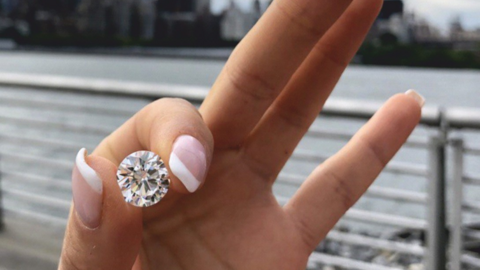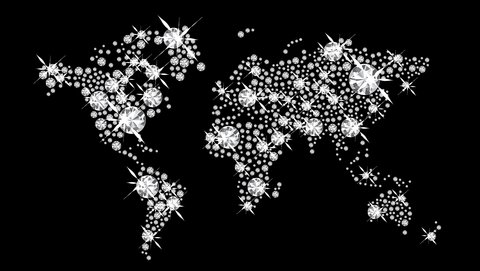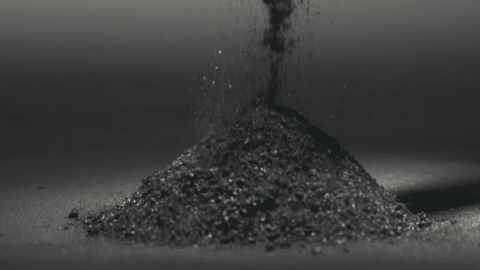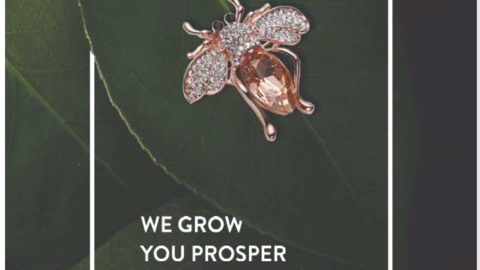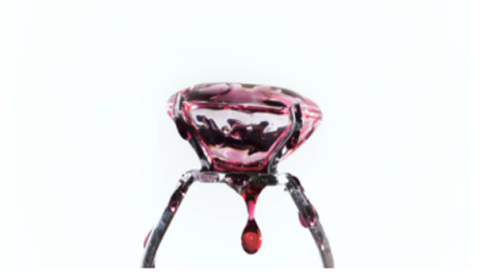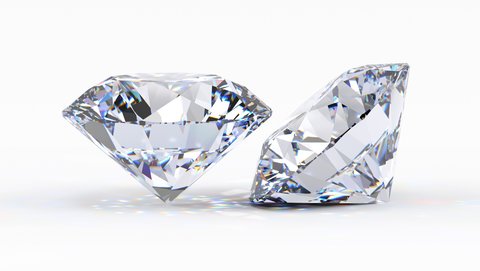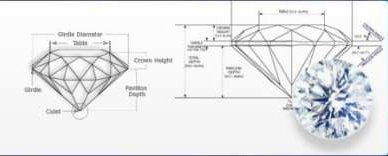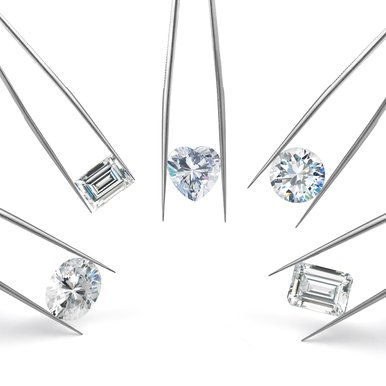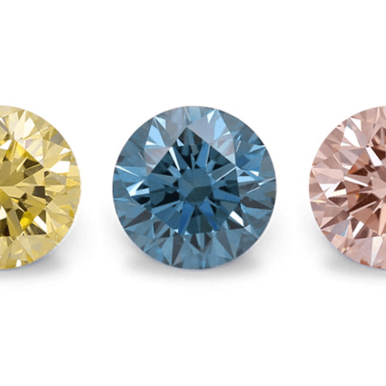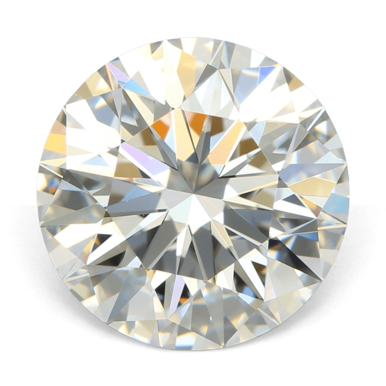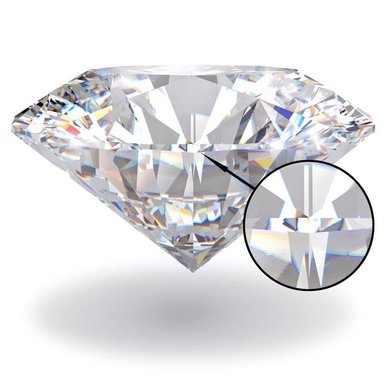The Rise of Lab-Grown Diamonds: Making Brilliant Choices
Lab-grown diamonds have revolutionized the jewelry market, offering consumers an ethical, sustainable, and cost-effective alternative to mined diamonds. As these remarkable gems continue to gain popularity, it's crucial to navigate the purchasing process with knowledge and confidence. At Labrilliante, we believe that informed customers make the best decisions when selecting their perfect diamond. This comprehensive guide will walk you through the most common mistakes to avoid when purchasing lab-grown diamonds, ensuring you find a gem that matches both your dreams and your budget.
The Science Behind Lab-Grown Brilliance
Lab-grown diamonds are real diamonds with the same chemical composition, physical properties, and optical characteristics as natural diamonds. These magnificent gems are created in controlled laboratory environments that replicate the natural conditions under which diamonds form deep within the Earth.
There are two primary methods used to create lab-grown diamonds:
- High Pressure High Temperature (HPHT) - This process mimics the natural conditions under which diamonds form in the Earth's mantle, applying extreme pressure and heat to carbon sources to create diamond crystals.
- Chemical Vapor Deposition (CVD) - This more recent technology involves placing a thin diamond seed in a chamber filled with carbon-rich gas, which is then heated to create plasma. The carbon atoms bond to the seed, gradually building a diamond crystal layer by layer.
Both processes result in diamonds that are chemically, physically, and optically identical to mined diamonds. The only difference is their origin – one comes from beneath the Earth, while the other is born in a laboratory. At Labrilliante, we primarily offer CVD diamonds due to their exceptional clarity and color characteristics.
Common Misconceptions About Lab-Grown Diamonds
| Misconception | Reality |
|---|---|
| Lab-grown diamonds are fake | Lab-grown diamonds are real diamonds with identical chemical composition (pure carbon) to mined diamonds |
| They don't sparkle as much | Lab-grown diamonds have the same optical properties and brilliance as mined diamonds |
| They're not as durable | With a hardness of 10 on the Mohs scale, lab-grown diamonds are just as durable as mined diamonds |
| They look artificial | Even expert gemologists cannot distinguish lab-grown from natural diamonds without specialized equipment |
Understanding the 4Cs of Diamond Quality
When shopping for lab-grown diamonds, understanding the 4Cs is essential for making an informed decision. These four characteristics—Cut, Color, Clarity, and Carat—determine a diamond's quality, appearance, and value.
Cut: The Key to Sparkle
The cut of a diamond is arguably the most important factor affecting its beauty. It refers not to the shape (round, princess, etc.) but to how well the diamond has been fashioned to reflect light. A well-cut diamond will have excellent:
- Brilliance (the total light reflected)
- Fire (the dispersion of light into rainbow colors)
- Scintillation (the sparkle when the diamond moves)
Cut grades typically range from Excellent to Poor. At Labrilliante, we primarily offer Excellent and Very Good cuts to ensure maximum brilliance.
Color: The Absence of Hue
For colorless diamonds, the color grade actually measures the absence of color. The scale runs from D (completely colorless) to Z (light yellow or brown).
Diamond Color Grade Comparison
| Grade | Description | Visual Appearance |
|---|---|---|
| D-F | Colorless | Ice-like, exceptional brilliance |
| G-J | Near Colorless | Appears colorless to the naked eye |
| K-M | Faint Yellow | Slight tint may be visible |
| N-Z | Very Light to Light Yellow | Noticeable yellow tint |
One advantage of lab-grown diamonds is the ability to create higher color grades consistently.
Clarity: Evaluating Imperfections
Clarity measures the presence of inclusions (internal flaws) and blemishes (surface irregularities). The scale ranges from Flawless (no inclusions or blemishes visible under 10x magnification) to Included (inclusions visible to the naked eye).
Diamond Clarity Grades Explained
| Clarity Grade | Description |
|---|---|
| FL, IF | Flawless, Internally Flawless |
| VVS1, VVS2 | Very, Very Slightly Included |
| VS1, VS2 | Very Slightly Included |
| SI1, SI2 | Slightly Included |
| I1, I2, I3 | Included |
Lab-grown diamonds often have excellent clarity, as the controlled environment minimizes the formation of inclusions.
Carat: Weight Matters
Carat refers to the diamond's weight, not size. One carat equals 0.2 grams, and is divided into 100 points. While larger diamonds are rarer and more valuable, two diamonds of the same carat weight can vary significantly in price depending on the other 3Cs.
How the 4Cs Affect Pricing
The relationship between the 4Cs and price is not linear. For example, the price difference between a 0.9-carat and 1.0-carat diamond can be substantial, even though the visual difference is minimal. At Labrilliante, we help our customers find the perfect balance between quality factors to maximize value.
Mistake #1: Skipping Your Diamond Homework
Before embarking on your lab-grown diamond journey, thorough research is essential. Many buyers rush into their purchase without establishing clear parameters, leading to disappointment or overspending.
Setting Your Diamond Parameters
Begin by determining:
- Budget: Establish your comfortable spending limit before falling in love with a specific diamond.
- Style Preferences: Consider the diamond shape, setting style, and metal type that best suits your taste.
- Size Parameters: Decide on the minimum carat weight you desire.
- Quality Threshold: Determine which aspects of the 4Cs matter most to you.
At Labrilliante, we recommend prioritizing cut quality above all else, as it has the most significant impact on a diamond's beauty.
The Consequences of Skipping Research
Unprepared buyers often experience:
- Confusion when comparing options
- Vulnerability to upselling
- Post-purchase dissatisfaction
- Uncertainty about the value received
Essential Lab-Grown Diamond Research Resources
| Resource Type | What You'll Learn | Why It Matters |
|---|---|---|
| Diamond Grading Guides | Understanding quality metrics | Makes certification meaningful |
| Lab-grown Diamond Technologies | Differences between CVD and HPHT | Affects diamond characteristics |
| Setting Styles | How mounting affects appearance | Enhances your diamond's beauty |
| Current Market Pricing | Fair value ranges | Ensures you pay appropriately |
Labrilliante offers comprehensive educational resources to help you understand lab-grown diamonds before making your investment. Our diamond specialists can guide you through the learning process, answering questions and helping you set realistic expectations.

Mistake #2: Choosing the Wrong Jeweler
Your choice of retailer is as important as your choice of diamond. Not all jewelers have the same standards, policies, or expertise in lab-grown diamonds.
Identifying Reputable Lab Diamond Retailers
Look for jewelers who:
- Specialize in or have substantial experience with lab-grown diamonds
- Provide comprehensive diamond certificates from reputable grading labs
- Offer transparent pricing and policies
- Have positive customer reviews and testimonials
- Provide detailed product information
- Offer strong warranties and after-sale support
Labrilliante meets all these criteria, with specialists dedicated exclusively to lab-grown diamonds and a commitment to complete transparency.
Questions to Ask Your Jeweler
Before making a purchase, ask:
- What laboratory grew this diamond?
- What process was used (HPHT or CVD)?
- Has the diamond undergone any post-growth treatments?
- What certification comes with the diamond?
- What are your return, exchange, and warranty policies?
- Do you offer after-purchase services like cleaning and maintenance?
Red Flags to Watch For
Be cautious of retailers who:
- Provide vague answers about diamond origins
- Lack proper certification
- Offer prices significantly below market value
- Use high-pressure sales tactics
- Have restrictive return policies
- Cannot explain quality characteristics

Mistake #3: Overlooking Certification Essentials
A diamond certificate, also known as a grading report, is a document issued by an independent gemological laboratory that verifies a diamond's characteristics. For lab-grown diamonds, certification is just as important as for natural diamonds—perhaps even more so.
Why Certification Matters for Lab-Grown Diamonds
A proper certificate:
- Verifies that the stone is a genuine diamond
- Confirms it was laboratory-grown (not natural or simulant)
- Documents the 4Cs and other quality factors
- Serves as proof of value for insurance purposes
- Provides transparency about any treatments
Without certification, you have no objective verification of what you're purchasing.
Trusted Certification Bodies for Lab-Grown Diamonds
| Certification Lab | Reputation | Specialties | What Sets Them Apart |
|---|---|---|---|
| IGI (International Gemological Institute) | Industry leader for lab-grown | Comprehensive reports | Widely recognized standard for lab-grown diamonds |
| GIA (Gemological Institute of America) | Highest reputation | Excellent consistency | Recently expanded lab-grown certification |
| GCAL (Gem Certification & Assurance Lab) | Known for precision | Detailed light performance analysis | Offers advanced imaging technology |
At Labrilliante, all our diamonds come with certification from respected laboratories, primarily IGI, ensuring your purchase is backed by objective third-party verification.
What to Look for on a Certificate
A proper lab-grown diamond certificate should include:
- The 4Cs (cut, color, clarity, carat)
- Measurements and proportions
- Fluorescence rating
- Growth method (HPHT or CVD)
- Any post-growth treatments
- Plot diagram showing inclusions
- Confirmation it's laboratory-grown
- Unique identification number
Verifying Certificate Authenticity
Always check that:
- The certificate number on the document matches the laser inscription on the diamond
- The certificate can be verified on the issuing laboratory's website
- The specifications match what the seller is claiming
- The certificate is from a reputable laboratory
Mistake #4: Assuming All Lab-Grown Diamonds Are Created Equal
A common misconception is that all lab-grown diamonds are identical in quality. In reality, there can be significant variations in characteristics and value.
Manufacturing Process Differences
HPHT and CVD diamonds often have different typical characteristics:
HPHT vs. CVD Lab-Grown Diamond Comparison
| Characteristic | HPHT Diamonds | CVD Diamonds |
|---|---|---|
| Typical Color | May have bluish undertones | Usually more colorless |
| Inclusions | Metallic inclusions possible | Crystal strain patterns more common |
| Growth Pattern | Cubic or octahedral | Layer by layer |
| Post-growth Treatments | Less commonly needed | May undergo HPHT treatment to improve color |
At Labrilliante, we carefully select diamonds with optimal characteristics from both processes, focusing on those with minimal need for post-growth treatments.
Understanding Diamond Types
Most lab-grown diamonds are Type IIa—the purest form of diamond, containing minimal nitrogen impurities. In nature, Type IIa diamonds are extremely rare (less than 2% of mined diamonds), but they're common in lab-grown diamonds due to the controlled environment.
This exceptional purity gives lab-grown diamonds exceptional optical properties and transparency, but quality still varies significantly within this category.
Quality Indicators Beyond the 4Cs
Look for:
- Absence of strain patterns (visible under specialized equipment)
- Minimal fluorescence (unless you prefer the effect)
- Excellent proportions for maximum light return
- Absence of growth lines or grain boundaries
- No evidence of treatments or enhancements
Mistake #5: Underestimating the Power of Cut
The cut is arguably the most critical factor in a diamond's beauty, yet it's often overlooked in favor of size or clarity. A well-cut diamond will appear more brilliant and even larger than a poorly cut diamond of the same carat weight.
Why Cut Reigns Supreme
The cut determines how light interacts with your diamond:
- Brilliance: The total light reflected from a diamond
- Fire: The dispersion of light into spectral colors
- Scintillation: The flashes of light and dark, or sparkle, when a diamond moves
A poorly cut diamond, regardless of its color, clarity, or size, will appear dull and lifeless. At Labrilliante, we prioritize excellent cuts because we know this factor has the most significant impact on a diamond's visual appeal.
Diamond Cut Grade Performance Comparison
| Cut Grade | Light Performance | Visual Impact | Value Proposition |
|---|---|---|---|
| Excellent | 90-100% light return | Maximum fire and brilliance | Worth the premium price |
| Very Good | 80-89% light return | Nearly as brilliant as Excellent | Excellent value option |
| Good | 70-79% light return | Noticeably less sparkle | Budget option with compromises |
| Fair | 50-69% light return | Visibly diminished brilliance | Significant compromise |
| Poor | <50% light return | Dull appearance | Not recommended |
Critical Cut Proportions
Beyond the overall grade, specific proportions affect performance:
- Table percentage: Ideal range is typically 54-59%
- Depth percentage: Ideal range is typically 59-62.5%
- Crown angle: Ideal range is typically 34-35 degrees
- Pavilion angle: Ideal range is typically 40.6-41 degrees
- Girdle thickness: Should be thin to medium
- Culet: Should be none or very small
Labrilliante provides detailed proportion information for all our diamonds, helping you understand exactly what contributes to each stone's performance.

Mistake #6: Focusing Only on Size
While a large diamond can make a statement, prioritizing carat weight over other quality factors often leads to disappointment.
The Size vs. Quality Balance
When working within a budget, increasing carat size typically requires sacrificing other quality aspects:
- A larger stone with poor cut will appear dull and potentially smaller than a well-cut stone of lesser weight
- Lower color grades become more noticeable in larger stones
- Inclusions are more visible in larger diamonds
How Cut Creates the Illusion of Size
A well-cut diamond can appear up to 20% larger than a poorly-cut diamond of the same carat weight due to:
- Better light reflection creating more visual impact
- Ideal proportions maximizing face-up appearance
- Proper depth preventing weight hidden in the bottom
Smart Size Solutions
Consider these alternatives to simply buying the largest diamond possible:
- Choose fancy shapes like oval or marquise that appear larger for their carat weight
- Select a halo setting to create the appearance of a larger center stone
- Focus on finger coverage rather than specific carat weight
- Prioritize cut excellence for maximum visual impact
At Labrilliante, we help customers find the perfect balance between size and quality, often identifying diamonds that appear larger than their actual carat weight due to exceptional proportions.
Mistake #7: Neglecting Proper Lighting Conditions
The lighting environment dramatically affects how a diamond appears. Many customers purchase diamonds under jeweler's spotlights only to be disappointed when they see them in everyday lighting.
How Lighting Impacts Diamond Appearance
Different lighting conditions reveal different diamond properties:
How Different Lighting Affects Diamond Appearance
| Lighting Type | What It Reveals | Potential Deception |
|---|---|---|
| Jewelry Store Spotlights | Maximizes sparkle and brilliance | May hide color tints and mask cut deficiencies |
| Natural Daylight | Shows true color and clarity | Reveals actual performance in everyday conditions |
| Office Fluorescent | Tests performance in common indoor settings | Often reveals color tints in near-colorless diamonds |
| Candlelight/Dim Light | Shows low-light performance | Can mask clarity issues but also reduce brilliance |
At Labrilliante, we encourage customers to view diamonds under various lighting conditions to ensure satisfaction with their performance in all environments.
Online Buying Lighting Considerations
When purchasing online:
- Look for videos showing the diamond in motion
- Request images in different lighting environments
- Check for magnified images showing clarity characteristics
- Look for light performance analysis tools
Labrilliante provides 360° videos and multiple lighting condition images for all our diamonds, giving you a comprehensive understanding of how your diamond will perform in real-world settings.
Tools to Help Evaluate Diamond Brilliance
- ASET (Angular Spectrum Evaluation Tool) - Shows how efficiently a diamond returns light
- Idealscope - Reveals light leakage and optical symmetry
- Hearts & Arrows viewer - Demonstrates precision of cut in round diamonds
Mistake #8: Misunderstanding Value and Investment Potential
Lab-grown diamonds offer excellent value, but it's important to have realistic expectations about their long-term financial performance.
Current Lab-Grown Diamond Market Trends
Lab-grown diamonds typically sell for 30-40% less than comparable natural diamonds. This price gap represents tremendous value for consumers seeking beautiful, ethical gemstones, but it's important to understand market dynamics.
Resale Considerations
Unlike natural diamonds, which have historically maintained some resale value (though usually at significant discounts to retail), lab-grown diamonds:
- Are primarily consumer goods, not investment vehicles
- Have seen decreasing production costs over time
- May have limited resale markets
- Should be valued for their beauty and emotional significance rather than potential financial return
At Labrilliante, we believe in transparency about these market realities while highlighting the exceptional value proposition lab-grown diamonds offer for their quality and beauty.
The True Value Proposition
The real value of lab-grown diamonds lies in:
- Getting superior quality for your budget
- Ethical and environmental benefits
- The ability to afford a larger, higher-quality stone
- Peace of mind regarding conflict-free origins
[IMAGE: Infographic comparing price trends between natural and lab-grown diamonds over time, showing the value advantage of lab-grown]
Long-Term Considerations
While resale value may be limited, lab-grown diamonds offer:
- The same durability as natural diamonds (will last generations)
- The same beauty and optical properties
- Equal suitability for heirloom pieces
- Growing consumer acceptance and market presence
Get Access to Our Lab Diamond Database
Find Out About Prices and Availability Information
Best Practices: Your Lab-Grown Diamond Shopping Guide
Finding your perfect lab-grown diamond involves more than just avoiding mistakes. Follow these best practices to ensure a rewarding experience and exceptional value.
Online vs. In-Store Diamond Shopping Comparison
| Online Shopping | In-Store Shopping |
|---|---|
| Larger selection | Tactile experience |
| Often better pricing | Personal consultation |
| Detailed specifications available | Immediate gratification |
| Convenient comparison tools | See actual performance |
| Need for strong return policies | Build relationship with jeweler |
Labrilliante offers a hybrid approach with our comprehensive online platform and personal consultation services, giving you the benefits of both experiences.
Payment Protection Strategies
- Use a credit card for additional purchase protection
- Verify secure payment processing systems
- Understand the full payment timeline, especially for custom pieces
- Check if the jeweler offers payment plans or financing options
- Request receipts detailing all specifications and guarantees
Essential Questions to Ask
Before finalizing your purchase, ask:
- What is the exact manufacturing process used?
- Has the diamond undergone any treatments or enhancements?
- What is included in the warranty?
- How are repairs and maintenance handled?
- What happens if the diamond doesn't match the certificate?
- Are there sizing or setting fees if purchasing a loose diamond?
Understanding Policies
Look for retailers with:
- Minimum 30-day return period
- Free resizing (when applicable)
- Lifetime warranty against manufacturing defects
- Transparent upgrade policies
- Clear shipping and insurance information
At Labrilliante, we offer comprehensive policies designed to provide peace of mind throughout your ownership experience.
Documenting Your Purchase
Always ensure you receive:
- The original diamond certificate
- Detailed sales receipt listing all specifications
- Appraisal for insurance purposes
- Written warranty information
- Care instructions
[IMAGE: A folder containing documentation - certificate, warranty card, appraisal, and receipt - representing proper purchase documentation]
Making Your Brilliant Choice
Lab-grown diamonds represent not just a beautiful choice, but a mindful one. By understanding the most common mistakes buyers make and how to avoid them, you're well-positioned to find a diamond that offers exceptional beauty, value, and peace of mind.
Remember these key takeaways as you search for your perfect lab-grown diamond:
- Prioritize cut quality for maximum brilliance
- Always insist on proper certification
- Consider all the 4Cs, not just size
- Choose a reputable retailer with transparent policies
- View diamonds in various lighting conditions
- Understand the true value proposition of lab-grown diamonds
At Labrilliante, we're committed to guiding you through this journey with expertise, transparency, and dedication to your satisfaction. Our collection of premium lab-grown diamonds offers exceptional quality, ethical sourcing, and outstanding value.
Whether you're searching for an engagement ring, a special gift, or a personal treasure, lab-grown diamonds offer the perfect combination of beauty, quality, and conscience. By avoiding the common pitfalls outlined in this guide, you're ready to make a brilliant choice that you'll treasure for a lifetime.
Submit a request using the contact form below to inquire about the availability and prices of the lab-grown diamonds you are interested in.
Frequently Asked Questions About Lab-Grown Diamonds
Yes, lab-grown diamonds are chemically, physically, and optically identical to mined diamonds. They are made of pure carbon in a crystalline structure and have the same hardness (10 on the Mohs scale), brilliance, and durability as natural diamonds. The only difference is their origin—lab-grown diamonds are created in controlled environments rather than formed in the earth over millions of years.
Lab-grown diamonds typically cost 30-40% less than comparable natural diamonds with the same cut, color, clarity, and carat weight. This significant price difference allows customers to purchase a larger or higher-quality diamond within the same budget. At Labrilliante, our pricing transparency ensures you understand the exceptional value our lab-grown diamonds offer.
Yes, lab-grown diamonds are just as durable as natural diamonds and will last for generations. With a hardness of 10 on the Mohs scale, they resist scratching, chipping, and normal wear. With proper care, a lab-grown diamond will maintain its beauty indefinitely, making it suitable for heirloom pieces and everyday wear.
While standard jeweler's loupes cannot distinguish between lab-grown and natural diamonds, specialized equipment can identify their origin. Most lab-grown diamonds contain subtle growth patterns or specific trace elements that sophisticated instruments can detect. However, this requires professional gemological equipment not available to consumers. This is why proper certification is essential—it confirms a diamond's lab-grown origin.
Although diamonds are extremely durable, they can chip if struck at precisely the wrong angle. If your lab-grown diamond becomes damaged, it can be repaired using the same techniques used for natural diamonds, including re-cutting, re-polishing, or, in severe cases, replacement under warranty or insurance. Labrilliante offers comprehensive warranty programs that protect against manufacturing defects.
Unlike natural diamonds, where certain colors are extremely rare and expensive, lab-grown diamonds in fancy colors are often similarly priced to colorless lab-grown diamonds. In some cases, vibrant colors like blue and pink may cost slightly more due to specialized growing techniques, but the premium is minimal compared to natural colored diamonds, which can cost hundreds of thousands or even millions of dollars.
No, despite marketing claims by some companies, diamonds cannot be meaningfully created from personal carbon sources like hair, ashes, or other organic materials. While technically all carbon atoms are identical, the manufacturing process requires purified carbon sources. Companies claiming to create "memorial diamonds" from loved ones' remains typically use standard carbon sources in their production with perhaps a symbolic amount of the personal carbon included.
Lab diamond technology is advancing rapidly, with research focusing on larger sizes, improved efficiency, and more precise control over characteristics. Experts predict that within the next decade, we may see production costs decrease further, size limitations expand, and new applications beyond jewelry emerge in fields like electronics and medicine. At Labrilliante, we continuously monitor technological advancements to offer our customers the latest innovations in lab-grown diamond quality.


